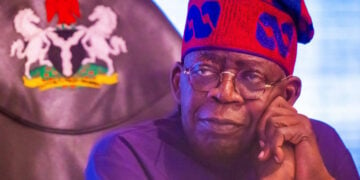Distinguished guests, ladies and gentlemen,
It is a great honour and privilege to stand before you today at this landmark event which is the official launch of Pinnacle Daily.
The emergence of a new newspaper in the media landscape is always worth praising, but it becomes even more significant when the medium is born into a rapidly changing digital world.
I have been part of the Nigerian media journey for nearly three decades, and I can confidently say there has never been a more exciting and challenging time for our industry than now.
Allow me, therefore, to share a few reflections on the past, present, and future of the media business, particularly as it relates to the new media in our environment.
- Transformation from Print to Online
To understand where we are today, we must remember where we came from.
The story of the newspaper is the story of information itself; from the first printed pages in Europe in the 1660s to pioneering Nigerian titles like the West African Pilot and Daily Times, which shaped public opinion during the colonial and independence eras. For most of the 20th century, newspapers ruled unchallenged. They were the heartbeat of democracy, the watchdogs of government, and the principal platforms for public discourse.
Revenue was predictable: cover price sales and advertisements sustained the newsroom. Newspapers printed high circulation figures, operated multiple presses, and deployed distribution vehicles across the country. Readers waited until morning for the news, and journalists had 24 hours to tell their stories.
But the world changed -and so did the news business.
Over the last two decades, and especially in Nigeria more recently, the internet, mobile phones, and social media have rewritten the rules of media operations. Information now moves at the speed of light. Readers no longer wait for tomorrow’s paper; they want breaking news, analysis, video, commentary, and conversations in real time. It has become necessary for everyone in the media to evolve or risk going to the oblivion.
Permit me to illustrate this evolution with a story close to my heart — the Daily Trust story.
When we founded Media Trust in 1996, we began as a media communications company. Two years later, we launched the weekly Trust which was modest but ambitious in vision. It aimed to become a credible, independent, and respectable regional platform. From there, we expanded to daily titles, first publishing five days a week, then eventually seven in a gradual process that took about five years.
We had no manual of operations, nor enough capital to buy a printing press. What we had was commitment and top-level managerial involvement that built the editorial and business systems and structure.
Over the years, we developed a strong brand across Nigeria. But like many print organisations, we eventually faced a hard truth; digital was the future.
Rather than resist, we embraced it , though not without a struggle. We invested in digital infrastructure, online editorial teams, and a fairly strong social media presence.
Our business experience had already taught us the need for multiple revenue streams beyond traditional advertising. So we created event-based programmes like the Daily Trust Dialogue, launched special projects and specialised publications that enhanced our brand and created sustainable income lines. We went on to establish Trust TV and Trust Radio, optimising digital platforms to deliver both text and video content.
Today, Daily Trust reaches millions of readers online- far beyond the physical limits of print circulation. That evolution was necessary. And it offers valuable lessons for new entrants like Pinnacle Daily.
- The Economics of New Rules and New Models
The shift from print to digital has transformed the traditional media business model. Yet, it has also opened new revenue opportunities. Here are highlights a few models.
- Digital Advertising
Apart from the primary advertising in the hard copy which still form the significant part of revenue for newspars ,digital ads is now mostly data-driven and personalised. Most newspapers run display ads online which are purchased through platforms like Google Ads allowing advertisers to reach readers based on demographics, interests, and browsing history — whether they are shopping for cars, furniture or following politics.
Similarly, native advertising blends seamlessly with editorial content. These are sponsored stories written in the same tone and style as news articles but paid for by brands. For example, a bank might sponsor a “Financial Literacy” debate or campaign, or a telecom company might support a “Digital Future” column.
- Subscription and Premium Content
With declining advertising revenue , many newspapers now charge readers for quality journalism. Subscription models require payment for premium content ; investigative reports, deep analysis, or expert opinion pieces.
The New York Times has been variously quoted as making a remarkable success of this model. In Nigeria, platforms like Premium Times and BusinessDay are advertising for it and i believe they are generating some income on it.
- Events and Conferences
Newspapers can leverage their credibility to create events and products e.g hosting conferences, summits, or webinars on key issues like business, technology, education, or governance.
Thisday ,Leadership newspaper and, Business Day are very good in creating events
- Brand Partnerships and Co-Created Campaigns
Media houses are increasingly becoming strategic partners to brands, NGOs, and government agencies. These partnerships involve co-creating content campaigns, investigative series, or multimedia storytelling to amplify causes or creating awareness.
For example, a newspaper might collaborate with UNICEF on a child-education awareness campaign, producing articles, videos, and infographics — all funded by the NGO.
Closely related, though not a direct revenue model, are grants. Many media organisations receive grants to pursue public service journalism. For instance, the Daily Trust Foundation received funding from the MacArthur Foundation to support investigative journalism training.
Each of these models shows that innovation and audience understanding are at the heart of profitability.
– Being text of keynote address delivered by Alhaji Isiaq Ajibola, Co-Founder, former MD of Daily Trust newspaper and author of the book: Journalism and Business: My Newspaper Odyssey during the official launch of the ‘Pinnacle Daily’ in Abuja.
- People, Technology, and Profitability
As Pinnacle Daily steps into this competitive space, adopting new revenue models is part of the journey. Sustainable revenue depends on how well you build your people, deploy technology, and manage profitability itself.
Three classifications that must be made in this regards are;
- Human Capital Readiness. Building a lean, smart, multi-skilled team is it.
In today’s media business, small teams with the right skills often outperform some large organisations. Pinnacle Daily must invest in good journalists, multimedia producers, social media experts and data reporters who can distribute stories across platforms and constantly guage audience needs.
Beyond the newsroom, business-focused personnel are essential. content monetisation specialists, event managers, and subscription growth strategists all of whom directly drive revenue must be hired. A lean, cross-functional team of fewer than 15 people in the early phase can often deliver more impact than a larger, less focused workforce.
- Technology Capital Readiness; building for scalability and innovation
Your technology is the invisible engine behind your success. A modern newsroom requires a flexible, SEO-optimised Content Management System (CMS) to ensure stories rank high on Google, are published quickly in multiple formats (text, video, podcast), and can integrate seamlessly with newsletters, social platforms, and apps.
Your Customer Relationship Management (CRM) and payment systems must also be technology-driven. Invest in seamless payment gateways like Paystack or Flutterwave, and prioritise automation and renewals. Most importantly, build for mobile first — over 85% of Nigerian audiences consume news via smartphones.
- Accounting for Profit – measure, measure, and optimise!
Profitability must be tracked and deliberately managed. Break down your revenue streams into categories ;advertising, subscriptions, events, branded partnerships and monitor each one’s performance regularly.
Control costs by classifying them into content production, technology, marketing, and overheads. Then track key business parameters such as: Customer Acquisition Cost (CAC): The total cost of acquiring a new paying customer.
Example: If you spend ₦5 million on advertising and logistics to attract 1,000 subscribers, your CAC is ₦5,000.
Revenue per Thousand Views (RPM): This may be harder to calculate, but it helps you identify which parts of your business are most profitable and where to focus resources.
Above all, remember: “If you can measure it, you can manage it — and if you can manage it, you can monetise it.”
And never forget that credibility itself is money. The more trust you build with your readers, the more likely they are to pay for your value proposition or recommend your platform to others.
Distinguished guests,
The journey from hard-copy newspapers to online platforms is more than a technological shift. It is a revolution in how we create, distribute, and monetise information. It challenges us to rethink journalism as a social responsibility and a business.
Yet, one truth remains; quality content, credibility and professionalism, will always command true value.
If Pinnacle Daily combines this principle with innovation, smart technology, and sound financial discipline, it will not only survive ,it will thrive.
As you embark on this journey, I urge you to dream boldly, innovate fearlessly, and above all, keep business motivation at the heart of your operations. The future of media in Nigeria and indeed, the world will be written by those who dare to adapt.
Thank you for listening, and once again, congratulations to the Pinnacle Daily team.





